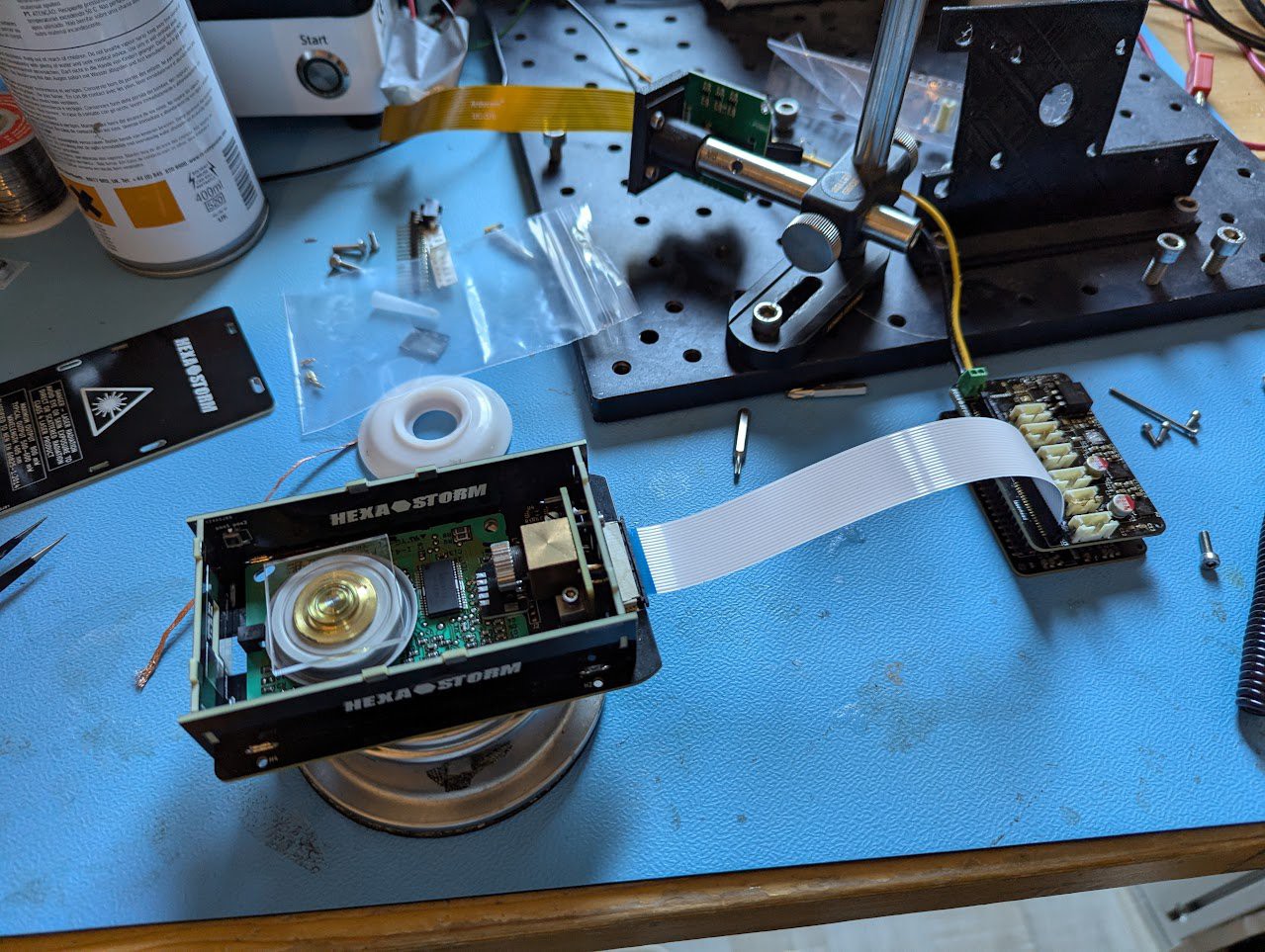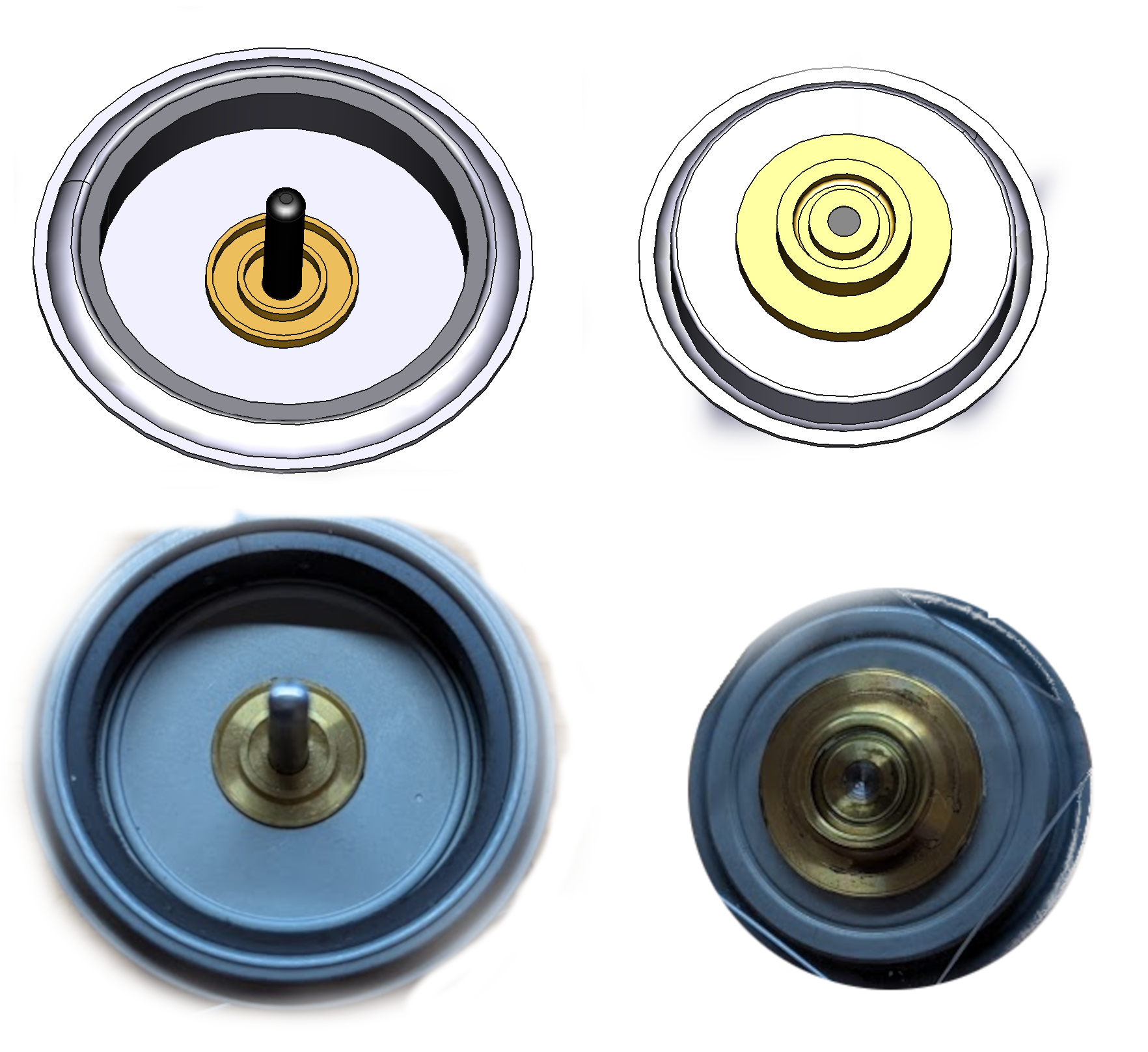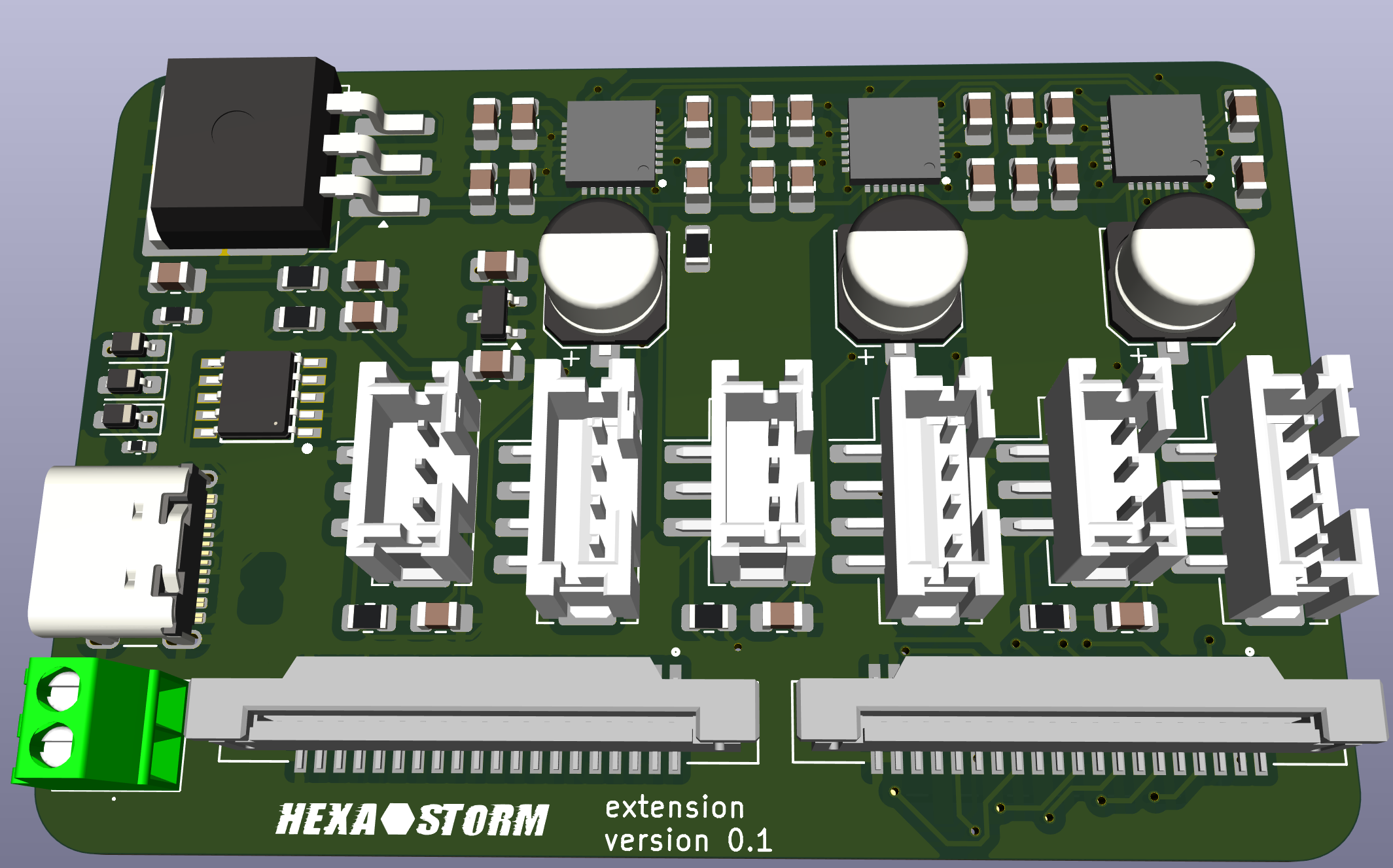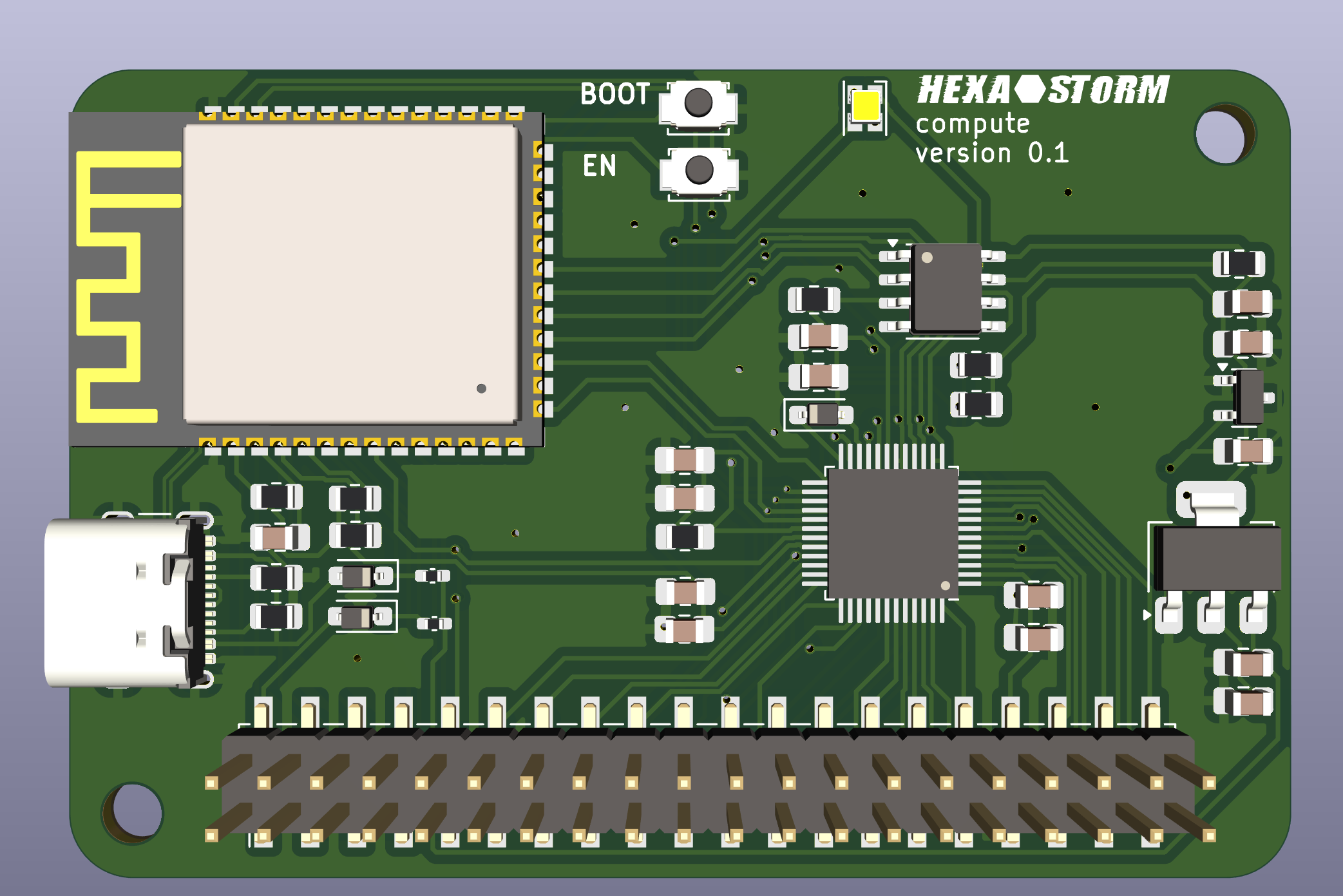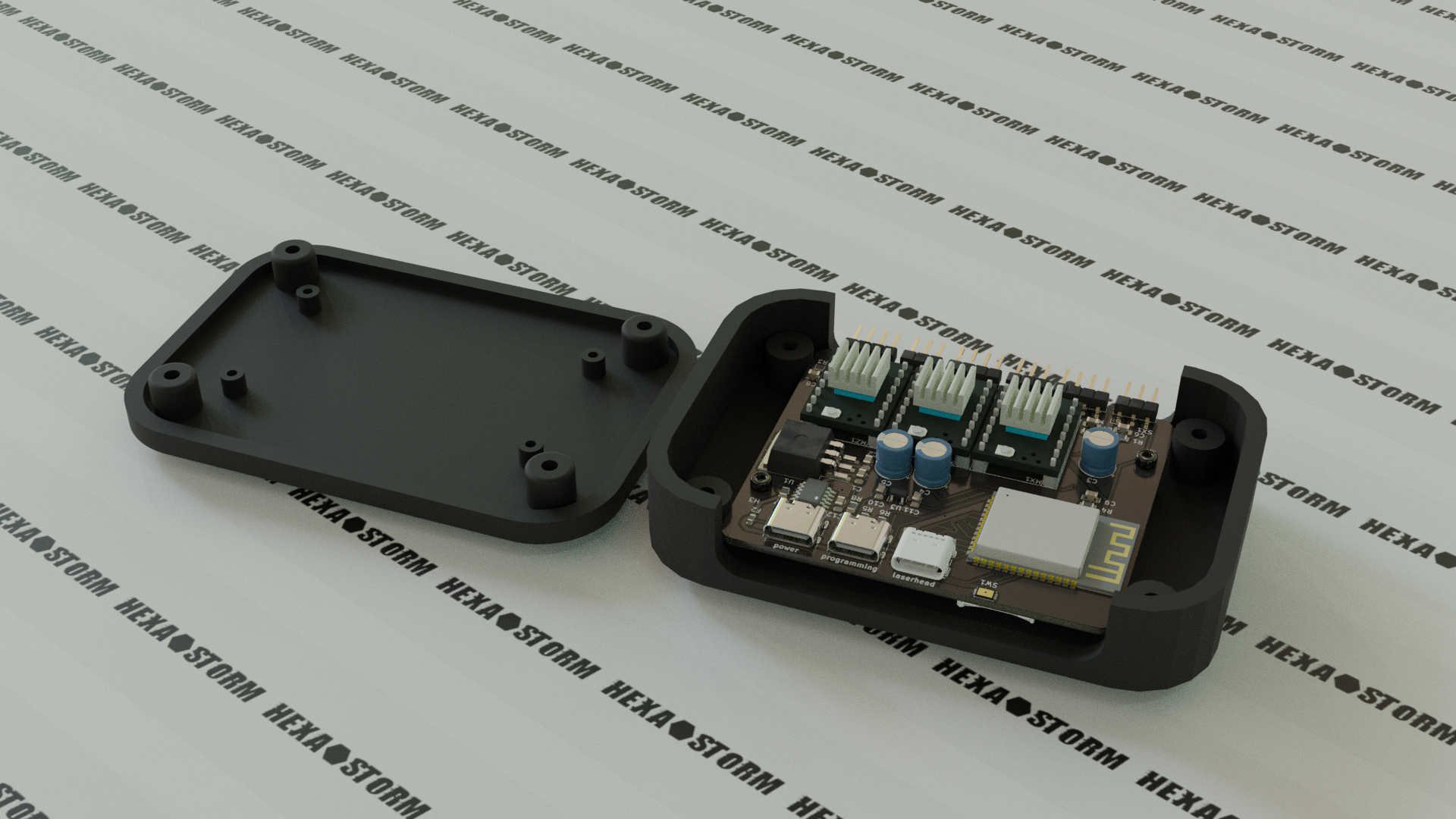-
Progress
01/09/2025 at 14:54 • 0 commentsThe boards sponsored by PCBWay are shown below. Progress in the last days has been good.
Following things are working: prism motor (spins), laserdiode (can turn on & pogo pin system works), TMC2209 communications work, ESP32 and ICEUP5K (FPGA) work.![]()
Progress has been as follows:
- 9 december: received boards
- 14 december boards populated & compute board working
numbers of some parts where wrong, which required extra shipment from mouser
- 19 december extension board populated (after receipt parts)
I encountered a bug.
- 30 december bug has been resolved
Two issues: - schema error (5V connected to 3.3V, this has been mitigated with soldering tricks)
- stepper motors communicate via UART1 which can create issues with UART0 (micropython repl)
this is a bug upstream but can be mitigated by a trick in the boot.py script.
- 2 january Destroyed laptop (applied 12V over USB input)
- 6 january Mounted motor, encountered issues moved to different board
- 7,8 january Changed code, ESP32 communicates with FPGA, spinning of prism work
- 9 january Laser works (forward diode voltage of 2.5V)
- 13 january Laser can be calibrated while on (pogo sytem works good)
Laser diode prism test --> pass
- 14 january Stability test / Mounting on machine
laser reaches stability criterion
mirror position without cylinder lens does work
mirror position for cylinder does not work
(cylinder lens might work, mirror position not optimal, needs testing)
- 18 january x and y motor work, homing switches work
spi unreliable (fails every 100_000 writes)
- 21 january spi issue fixed; (bad soldered bord + incorrect setting)
- 22 January test exposure works (resoldered x-dir pin,Current challenges remaining
- micropython might throttle the laserhead by not providing data at the correct speed
(I need to implement a check for this, e.g. can the laserhead process the expected amount of
lines in a minute)
- wiring is not optimal, folded FFC cable
-
PCBWay sponsors next iteration
11/27/2024 at 10:10 • 0 commentsI'm thrilled to announce that PCBWay is sponsoring the PCBs for my next version of the laser direct imaging head! Their generous support will help me push the boundaries of this exciting technology and create something truly innovative.
I'm incredibly grateful for their commitment to supporting the open hardware community. Be sure to check out PCBWay for all your PCB needs!
![pcbway - logo - Maker Faire NoVa]()
-
Hardware Update 2024
11/07/2024 at 14:55 • 0 commentsUpdate of the hardware of 2024 using AI voice. I plan to test it in December.
-
Render of the polygon mirror motor
09/06/2024 at 10:02 • 0 commentsThe laser head, version 0.1, is compatible with a brushless motor. While the PCB motor is also supported, it won't be the default configuration. To accurately visualize the mirror motor, a more detailed render was necessary. The NBC3111 mirror motor and a cad model in freecad is depicted below. Below a head is shown which supports the prism or mirror which is spinning.
![]()
![]()
-
Design Cycle Update: Extension module
08/16/2024 at 17:31 • 3 commentsThe extension module is mounted on top of a compute module. The female 20 pin header is not shown. Power is supplied via a USB-C connection requiring a 12V charger. An on-board converter (large black chip) reduces this to 5V for the compute board.
The board has three stepper drivers TMC2208 and three end stops. A 20-pin connector interfaces with the laser head. Another 20 pin connector is free to use. The laserhead needs to move less than a FFF printer due to the polygon, as such not a lot of current for the stepper motors is required. It is assumed this is less than 1 Amp.
Note: A USB-C connection with an FPGA for the laser head was initially considered but is currently postponed.
-
Design Cycle Update: Compute Module
08/04/2024 at 10:16 • 0 commentsI have initiated the next design cycle. The core component is the compute module, housing an ESP32 microcontroller and a UP5K FPGA. It's equipped with a reset/boot switch and a single control LEDs for the ESP32 and FPGA. A small memory module dedicated to storing the FPGA bootloader is also integrated. The ICE V module loads the FPGA directly from the ESP32. I keep it , as I might want to use this memory as a buffer for storing instructions to the laserhead. Board is 2 layer with mostly SMT components to keep costs low.
NOTE: LilyGO T-FPGA ESP32-S3 is an interesting alternative but it is not fully supported by https://github.com/YosysHQ/apicula
-
Microdot webserver for laser scanner
06/21/2024 at 14:11 • 0 commentsI did not post in quite some time. Luckily software part is now largely finished. You can test some of the code locally in cpython.
The webserver is quite different from Octoprint, see FLOSS weekly episode 778. I use Micropython instead of Python, furthermore I rely on microdot and not Flask.
Taken together, I need much less resources which greatly reducing costs and deployment complexity. -
rod based 3d printing with laser prism scanner
05/04/2024 at 23:04 • 0 comments![]()
From fabbaloo, a new research paper proposes an unusual 3D printing process that uses a rod instead of a flat print plate.
It would make a lot of sense to remove the slit and the beamer. I would use a laser prism scanner instead. The laser prism scanner can do 20k rpm x 8 lines. It would never need to stop..
I will get back to this
-
License changes
04/02/2024 at 16:03 • 0 commentsI changed the license of the software and hardware in the project. Code and hardware remain open source but cannot be used commercially unless you have a license. You are also not allowed to make clones.
I am willing to split of parts of the code base under more permissive licenses if this leads to collaboration.Synopsis License Terms
CC BY-NC-SA 4.0 Deed, you may not use the material for commercial purposes see https://creativecommons.org/licenses/by-nc-sa/4.0/deed.en for a summary
Motivation
Licensing the whole project as GPLv3 limits my ability to optimize my legal strategy with relation to other rational agents. I foresee competitive pressure from Asia, given the weak European industrial base and high labor prices.
Furthermore, I foresee increased competitive pressure and interest from the Netherlands. This has been increasing its investment in the sector of laser direct imaging. The Netherlands is strongly against open source.
If you now make changes, I have several options; acquire a license from you, split of part of the work under a more permissive license which allows us to collaborate commercially or write my own code which achieves the same in another way. -
Main board design
02/16/2024 at 10:31 • 0 commentsI envision the development kit consists out of two components; a laser head and a main board.
This post sheds more light on the main board.
The main board can be programmed and powered via USB C. These are two "regular" USB 2 connectors. The CH224K chip is used to request 12V from the power source. The main board uses a ESP32 S3 and connects to the laser head via USB C 3.1.
This is not a regular USB C connector. In an ideal world, you could connect to the laser head with USB C using your laptop.
I am working towards this, and therefore I am starting to support USB C 3.1. I will share more details on this in the future.
The main board features three stepper drivers, to move the laser head. Angled pin headers are used to connect to the end stops and stepper motors. A micro SD card reader is present for additional storage. The ESP32 S3 already provides 32 MB storage, so this should not be needed. The black box is AK-NW-84 (100x67x22m) and can be found online.![]()
 Hexastorm
Hexastorm